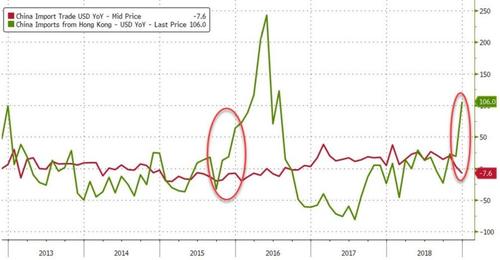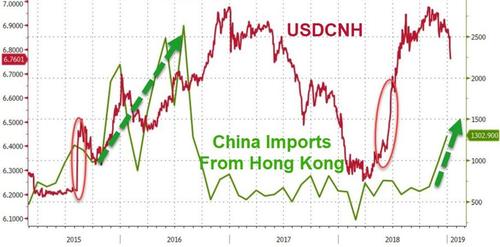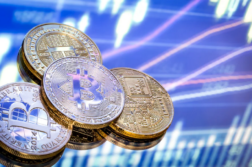
There’s attention being drawn to an anomaly in China’s trade data. Compared to imports of precious gemstones from Hong Kong, it could point to China’s wealthy overpaying for said imports. A method of moving capital out of the country that bypasses China’s capital controls.
An Outflow of Capital?
The first trigger is an increase in China’s capital outflow at the end of 2018. It correlates with both a devaluation of the Chinese yuan and an increase in the value of imports from Hong Kong.

As noted by ZeroHedge and reported by the Financial Times, citing RBS strategist Elsa Lignos, there has been a recent rise in imports to China of precious stones from Hong Kong. That rise constitutes 53% of China’s total imports from Hong Kong. A figure that was just 2.9% in February 2018.
FT: “Diamonds, opals, and other precious gems accounted for 53% of China’s imports from Hong Kong in November, up from a low of 2.9% last February.” —> way to evade capital controls and get money out
— Victorious Cake (@victoriouscake) January 21, 2019
Jeffries analysts note that at the same time there was “slower consumption” in the potentially comparable market of “big ticket gem-set jewellery.” This means the hike in imports of precious gems from Hong Kong might not correlate with market behavior.

As per the Financial Times, if China’s wealthy are “using the notoriously opaque gem trade to evade capital controls and transfer assets out of China” then:
This may be an ominous sign for the direction of the Chinese currency, and by extension, the economy.
A recent appreciation of the Chinese yuan may have removed the incentive for Chinese citizens to secretly move capital offshore. While the value of the yuan was falling in 2018 capital outflow risks were more of a concern for China.

Analysts are now watching to see if “imports” of precious gems from Hong Kong fall again. If this trend persists, it may potentially shroud capital exiting from China. Then, the yuan may once again devalue.
More signs of Chinese capital outflows rising again:
China’s imports of precious stones accounted for 69% of overall imports from Hong Kong last month.
Highest % since the mini yuan devaluation in August 2015.
Via @Bloomberg & @RBC pic.twitter.com/FzJHjMQLQN
— Otavio (Tavi) Costa (@TaviCosta) January 26, 2019
Capital Controls in China
China imposes strict capital controls. Individuals can move no more than the equivalent of $50,000 out of China each year. Chinese companies are only allowed to exchange yuan to the US dollar and other currencies when approved to do so. The Asia Times suggested on January 3 that these exchange controls were being subtly tightened.
China’s Capital Outflows Are Suddenly Soaring Again… And Why This Is Great News For Cryptos | Zero Hedge https://t.co/d15dhxTG2q
— BiasKnox (@BiasKnox) January 23, 2019
ZeroHedge reporting says “unofficially, China’s capital controls” have been “skirted” for years.
Other reporting suggests that despite potentially increasing efforts to prevent capital outflows not only is that outflow happening but that China’s wealthiest are themselves leaving too. Apparently, a third of Chinese millionaires in a survey say they are considering emigrating. And, that another report found two-thirds of China’s wealthy were already emigrating or had plans to leave China.
Police in Macau and mainland China detained 39 suspects in an underground lending case involving more than 30 billion yuan ($4.42 billion), as China steps up measures to reduce economic risks and clamp down on illicit capital outflows. https://t.co/iOxAMTCk2v
— Panay News (@panaynewsdotnet) January 24, 2019
The Impact of Capital Outflow in China
Chinese investment into companies in the wider global economy has also slowed as China looks to offset a potentially cooling economy by keeping money closer to home.
To encourage inward investment China has doubled the amount allowed to flow into its equities markets via its foreign institutional investors (QFII) programme. Taking the permitted figure to $300 billion. A Commerzbank analyst noted this was also a “genuine gesture” to ease trade talks with the US.
In 2015 China saw an outflow of capital that it took until 2017 to slow. Once that happened and capital outflows turned to inflows China’s economic outlook strengthened.
A return to greater capital outflows and a falling yuan, combined with falling economic growth would detriment China’s economy. Experts are concerned that a slowdown in Europe and China could trigger a global recession.







